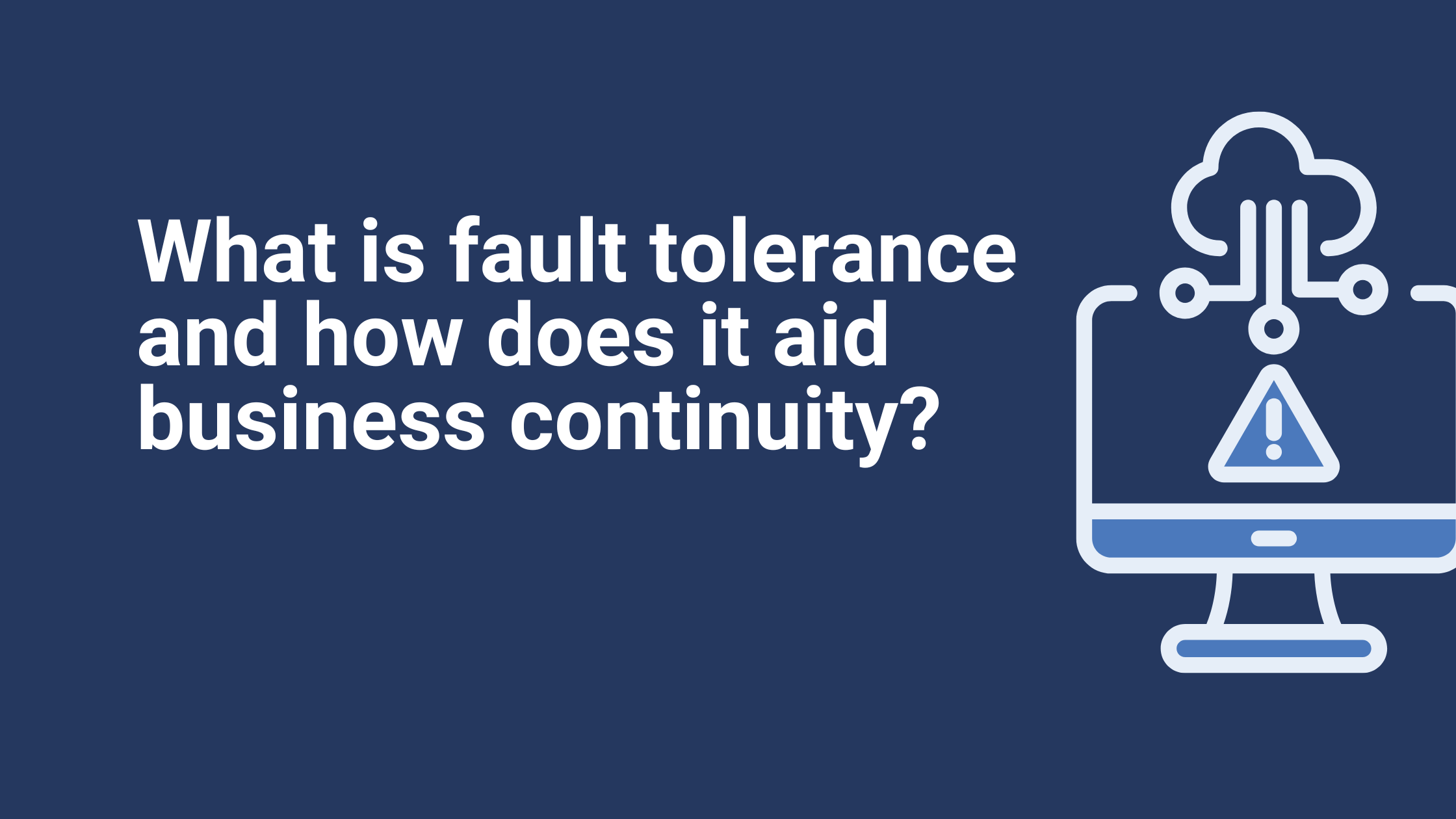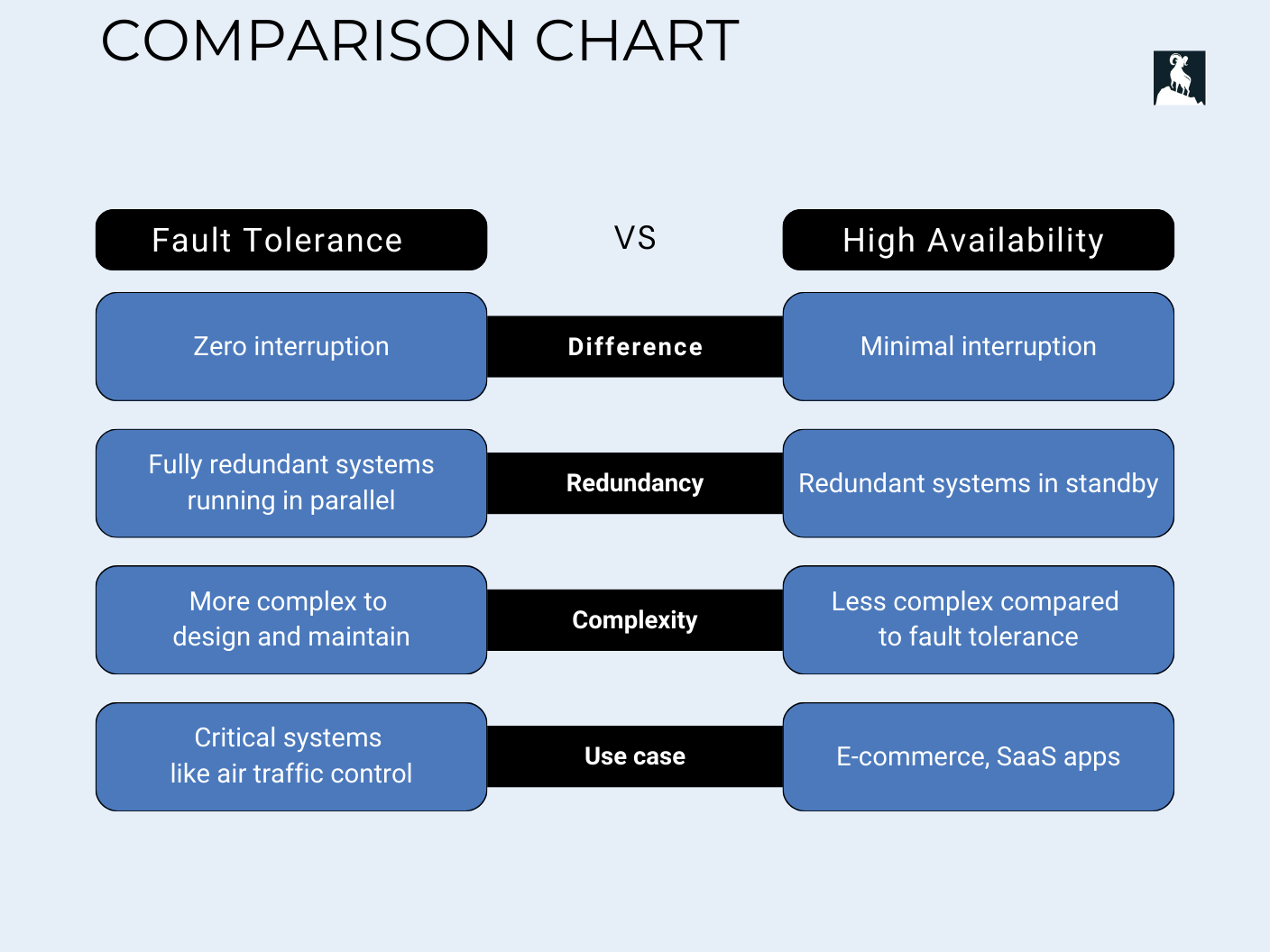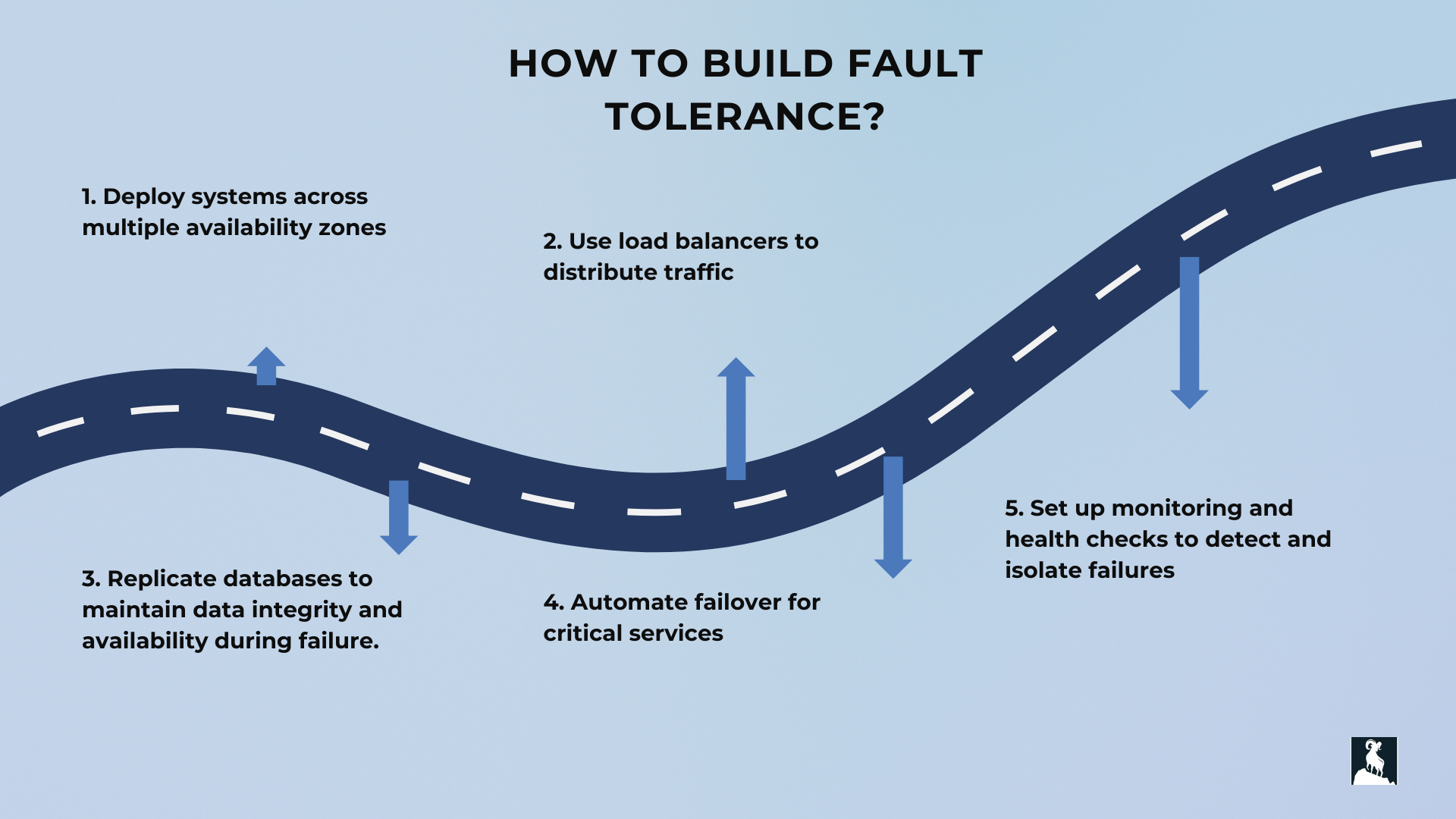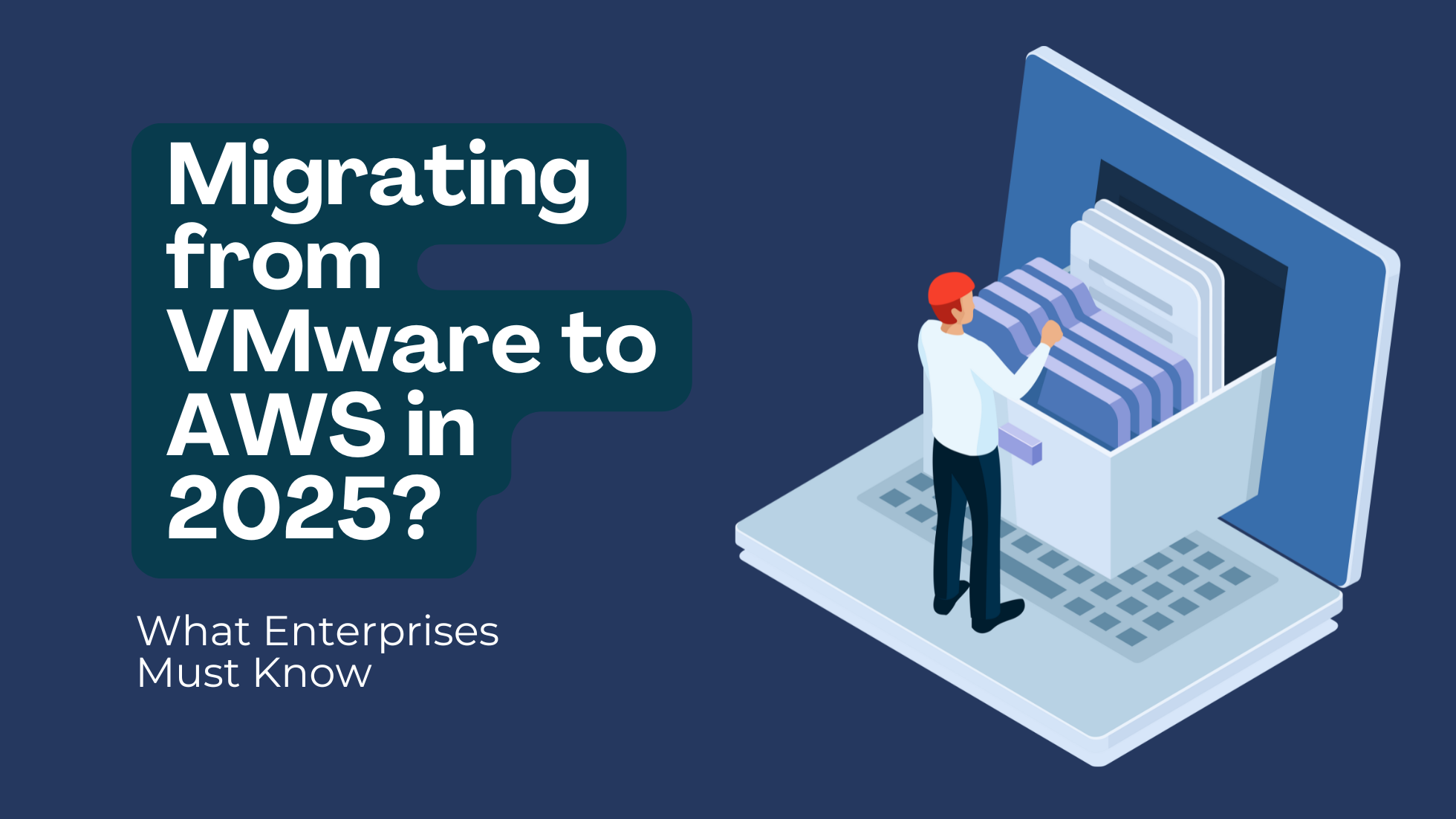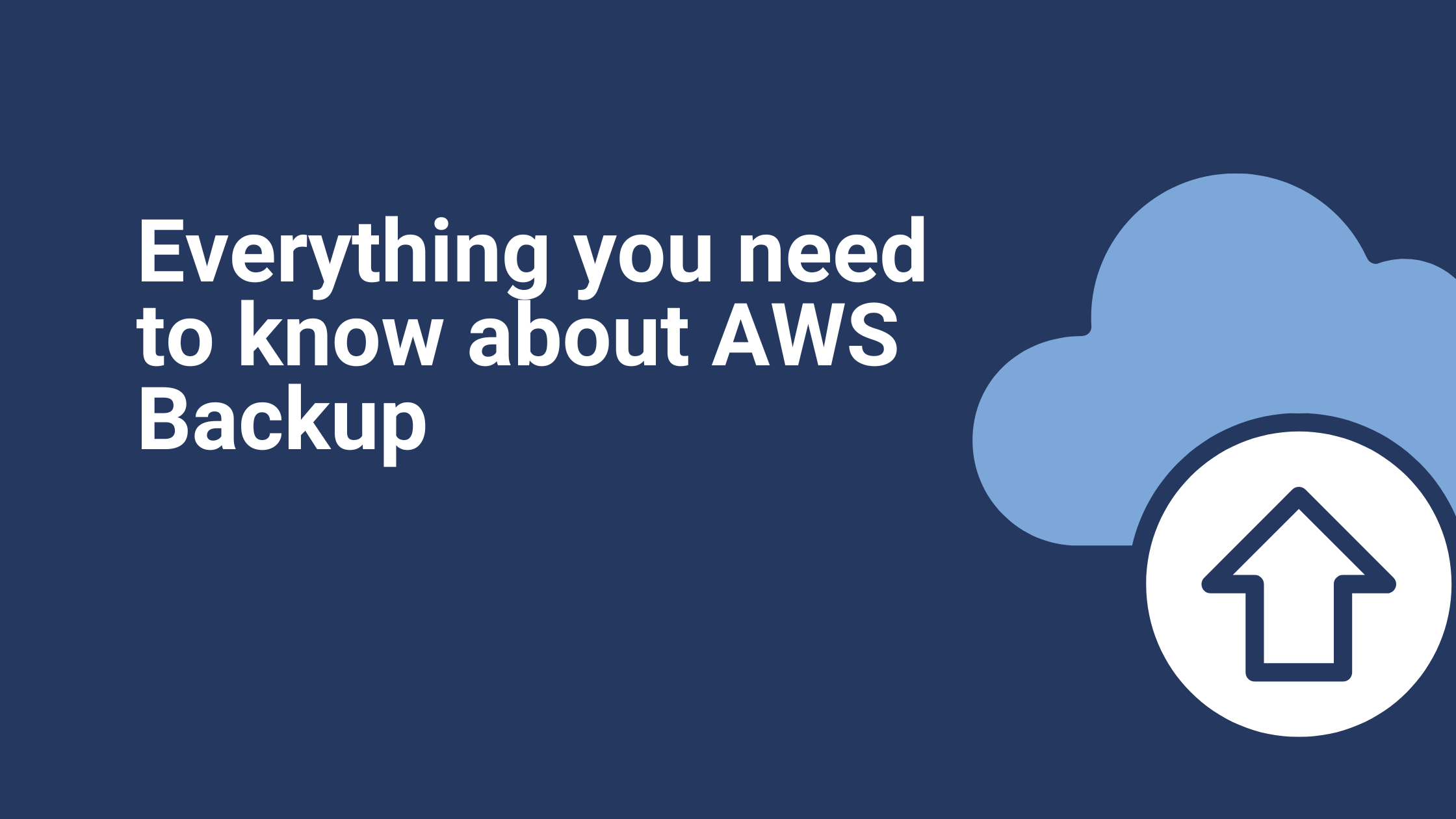What is Fault Tolerance? Get the In-depth 2025 Guide Now
Why do we need fault tolerance? Let’s consider an example. You run an online store, and your website suddenly crashes one day due to unseen hardware failure. The result is thousands of dollars in lost sales and frustrated customers.
You might think: “Isn’t hardware failure a thing of the past, particularly in 2025?” Despite cloud and data center advancements, hardware failure is still a prevalent and recurring issue.
However, if you had designed your system with fault tolerance, you could have avoided the downtime and lost customers. How? Having backup servers in different locations automatically handles traffic when one server goes down.
Cloud providers like AWS, Google Cloud, and Azure know that hardware failure is inevitable. As a result, they design their systems, expecting it to happen. This is exactly why we need fault tolerance.
What is fault tolerance?
Fault tolerance is a system’s ability to run smoothly, even when part of the system fails. Think of fault tolerance like an airplane with multiple engines. Even if one engine fails mid-air, the plane doesn’t crash. It keeps flying safely on the remaining engines until it can land or fix the issue.
Similarly, in cloud computing, if one server or system component fails, a fault-tolerant system automatically takes over so users don’t experience disruption.
What is the difference between fault tolerance and high availability?
Fault tolerance and high availability are often confused as they increase system uptime. However, confusing the two can lead to over or under-engineering.
- Definition
- Fault Tolerance is the ability of a system to continue operating without interruption even if a component fails.
- High availability refers to systems that minimize downtime. Short delays or performance degradation may occur in high-availability systems during failover.
2. Function
- In a fault-tolerant setup, you run two servers simultaneously in active-active mode across different availability zones, with data mirrored in real-time. Use fault tolerance if your system manages mission-critical workloads where interruption is unacceptable.
- In a high-availability setup, you run primary and standby servers (active-passive mode). If the primary server fails, the standby instance takes over. However, there might be a short delay (seconds or minutes).
3. Use Case
- Fault tolerance in systems are crucial in financial trading platforms, where even milliseconds of downtime could result in millions of dollars in losses.
- High-availability systems are a good solution for e-commerce websites. If there is quick recovery, they can tolerate a few seconds of delay during failover.
How to design a fault-tolerant cloud system?
To design a fault-tolerant cloud system, you need to build redundancy and eliminate single points of failure across all layers. When AWS was debugging an issue a few years ago, it suffered a major outage in its S3 Northern Virginia region. This outage lasted several hours, and several companies, including Quora and Airbnb, experienced partial or complete service disruptions. Here is what the organizations could have done differently to develop fault-tolerance cloud systems across regions.
- Deploy systems across multiple availability zones or regions so that if one zone fails, traffic automatically shifts to another.
- Use load balancers to distribute traffic across redundant instances so no single instance carries all the load.
- Replicate databases across zones to maintain data integrity and availability during failure.
- Automate failover for critical services, such as DNS failover or managed services with built-in redundancy (e.g., Amazon RDS Multi-AZ, S3).
- Monitoring and health checks to detect and isolate failures automatically.
What is redundancy?
IT redundancy refers to additional components such as servers, storage, and network paths that can take over if a system fails. Organizations use redundancy when system uptime and availability are critical. When redundancy increases fault tolerance and reduces downtime, it’s a good thing. However, redundancy can be a waste for low-impact systems where failure is tolerable and small-scale operations with limited budgets.
What is fault tolerance vs redundancy?
Although fault tolerance and redundancy are often interchangeable, they address different things.
Redundancy is more for components or hardware. For instance, if you want your micro-service to function when there is a hardware issue, add multiple EC2 instances across different physical servers or availability zones. Use a load balancer to route traffic between them. If there is an issue, traffic automatically shifts to the healthy one. This is an example of using redundancy to increase a solution’s availability. Servers, disks, and other components are made with multiple redundancies for better reliability as a whole.
Fault tolerance, on the other hand, focuses more on systems. The cloud computing networks, your S3 storage buckets, and even Amazon’s services, such as Elastic Load Balancing (ELB), are made to be fault-tolerant, but that doesn’t mean all AWS services and components are the same. You still need to treat services like EC2 seriously to increase availability.
AWS for high-availability and fault tolerance
One big advantage of using AWS for high availability and fault tolerance is that you can leverage Amazon’s experience in disaster recovery. Like other cloud service providers, AWS deals with outages caused by power problems, natural disasters, and human error all the time. They’ve gotten good at recovery, too. Amazon’s 99.5% SLA is about as good as it gets. You can still expect several hours of downtime every year, but that’s not a bad standard at all.
In fact, Amazon is leading the market with better redundancy and multiple layers of protection to maintain availability. Nevertheless, relying entirely on AWS and its services isn’t the way to create a reliable and robust cloud ecosystem. You still need to configure the different instances correctly and use services to strengthen your system from the core. Fortunately, there are a number of things you can do.
How to design a fault-tolerant cloud system?
Fault tolerance in cloud computing is a lot like the balance of your car. You can still drive the vehicle—with limitations, of course—even with one flat tire. A fault-tolerant system can do the same thing. Even when one or some of its components stop working due to an error, the system can still deliver its functions or services to a certain extent. Designing a system for maximum fault tolerance isn’t always easy, but AWS offers several tools to boost reliability, starting with Amazon Machine Images (AMI). When you begin setting up the system by creating a working AMI, you have the option to start a new instance using the same AMI should another fail.
Another way to add fault tolerance is to use EBS or Elastic Block Storage. EBS effectively mitigates problems associated with your drives running out of storage space. It also allows you to attach different EC2 instances, meaning you can switch from a failing EC2 instance to another without switching storage.
Since all configurations and data are stored in the same EBS, you are basically keeping the system running despite replacing the EC2 instance used by the system. You can take this a step further by introducing an Elastic IP address, which allows multiple EC2 instances to use the same IP address; this eliminates the need for DNS zone updates or reconfiguration of your load-balancing node.
Fault tolerance that scales
One more thing to note about fault tolerance and redundancy in AWS: you have plenty of auto-scale options. Many AWS services can now be scaled up (or down) automatically. The others support scaling when triggered. Combined with services like EBS, you can easily create a fault-tolerant system in AWS. Adding multiple redundancies to support the system further will result in a capable and immensely reliable system.
With the market being as competitive as it is today, offering highly available services to users becomes an essential competitive advantage. Downtime is unacceptable, not when your competitors are always available. You stay ahead of the market by increasing fault tolerance and adding redundancies. For more information on optimizing your cloud ecosystem on AWS, read our article, Optimizing DevOps and the AWS Well-Architected Framework.
Ibexlabs is an experienced DevOps and managed Services provider and an AWS consulting partner. Our AWS-certified DevOps consultancy team evaluates your infrastructure and makes recommendations based on your individual business or personal requirements. Contact us today to set up a free consultation to discuss a custom-built solution tailored just for you.

